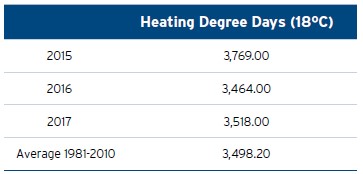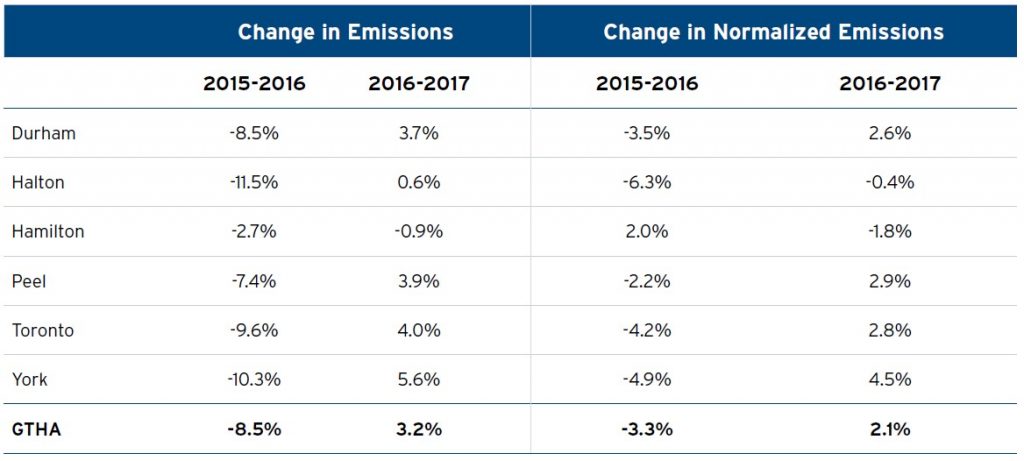49.2 megatonnes of carbon emissions were emitted in the GTHA in 2017. How did we calculate this quantity?
In general, we followed the guidelines in the Global Protocol for Community-Scale Greenhouse Gas Emissions Inventories, and attempted to use as many primary sources of data as possible. Our emissions quantification methods are rigorous, transparent, consistent, and using credible data.
This carbon emissions inventory includes Scope 1 and 2 emissions. The GTHA Scope 3 emissions are significant, but are not included in our inventory due to methodological complexities and a lack of available data.
Results from emissions inventories are conditioned by the methodology, information available and assumptions made, in a complex process which sometimes doesn’t provide an optimal solution. One solution is not necessarily better than another, so comparing results from two different inventories is usually misleading.
For this reason, the results in our inventory may differ from results in inventories published by individual municipalities. Our methods are determined in part by the availability of consistent data for every GTHA region.
We use a variety of sources to create a picture of GTHA-wide emissions, that has six detailed regional profiles.
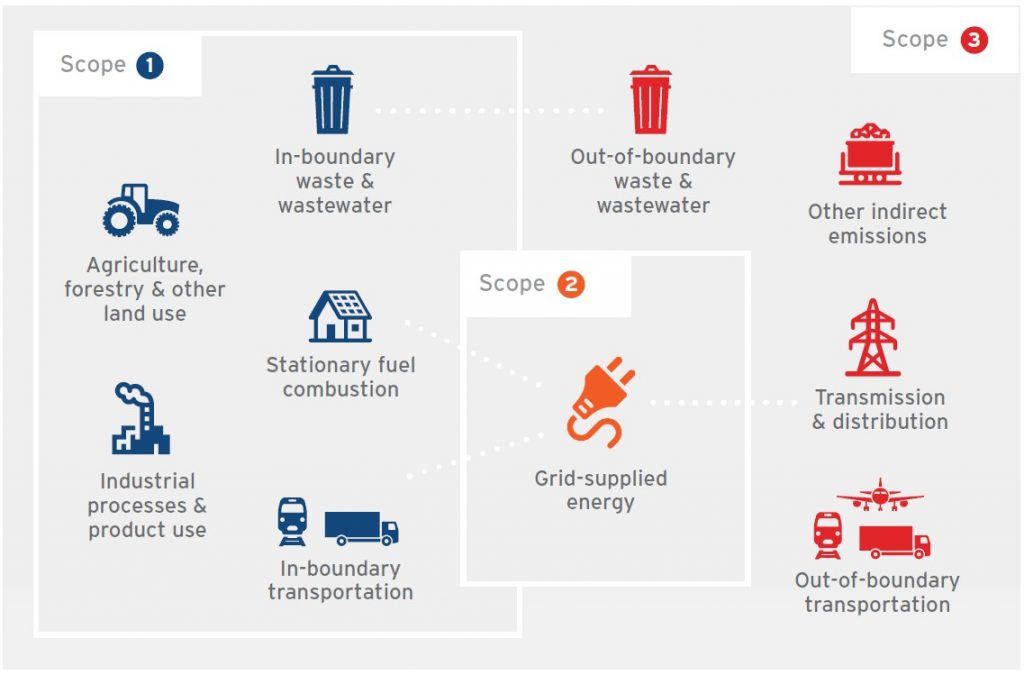
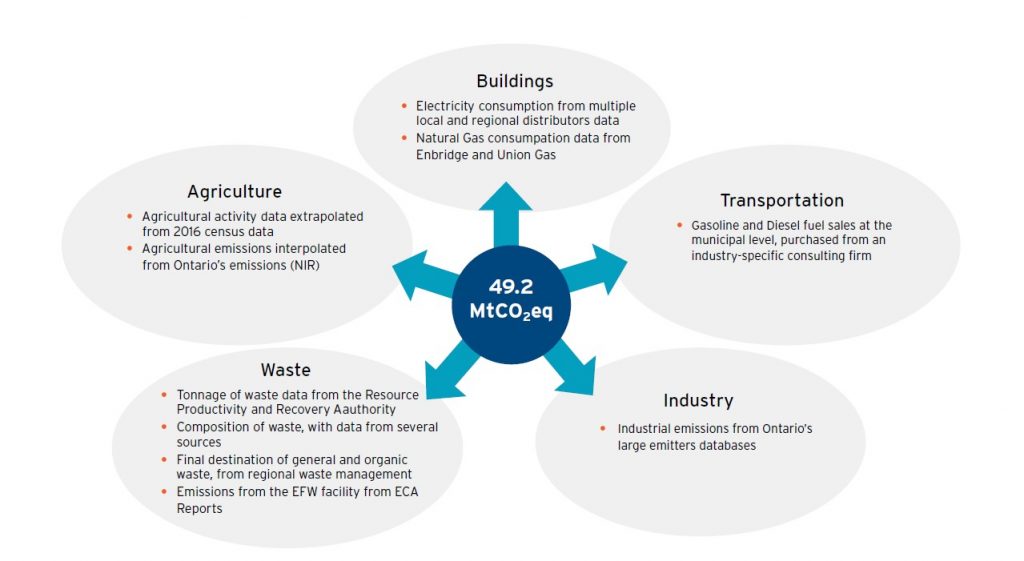
Buildings emissions are calculated from natural gas and electricity use
According to Natural Resources Canada’s Comprehensive Energy Use Database, 89.2 per cent of residential energy use and 94.9 per cent of commercial/institutional energy use comes from electricity and natural gas consumption. The umbrella term “Stationary Energy” is often used to refer to emissions from these sources, but we use the term “Buildings” because the primary use for these energy sources is heating buildings and heating water for buildings.
We obtained natural gas consumption data from Enbridge and Union Gas. We did not account for leakage of natural gas during local distribution and upstream emissions from the mining and refinement of natural gas. We obtained electricity data from the Ontario Energy Board’s Reporting and Record Keeping Requirements (RRR), and local distribution companies (LDC).
The natural gas and electricity consumption values were multiplied by emissions factors from Canada’s National Inventory Report, 0.001899 tCO2eq/m3 of natural gas and 0.00002 tCO2eq/kWh for 2017, respectively.
Transportation emissions are calculated from gasoline and diesel fuel sales
The fuel sales data that we use from Kent Group Limited covers about 99 per cent of public gas stations in the GTHA. However, this dataset does not contain data on diesel fuel sales form bulk contracts and cardlock sales, which is a limitation.
While gasoline sales in the GTHA account for 45 per cent of Ontario’s total consumption (an expected value based on population and economic activity), our diesel data accounts only for 15 per cent of the province’s consumption; this suggests that we could be significantly underestimating the diesel emissions in the region.
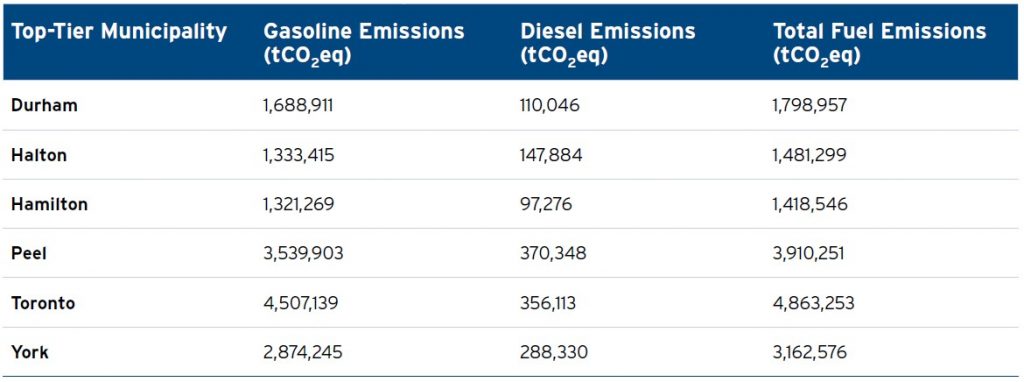
Industry emissions from large emitters are included
We use the data reported to Ontario’s large emitters database. We remove cogeneration and some other facilities to minimize the double counting of electricity and natural gas, which is already embedded in the building sector.
Waste emissions are calculated using the methane commitment approach
Waste disposed in a given year will continue creating emissions over many years. However, we attribute the lifetime emissions of waste to the year when it was disposed. The waste tonnage disposed of in landfill, and the degradable organic carbon (DOC) content of that waste are the two key data points needed when using this approach.
The GTHA has one energy-from-waste facility, the Durham York Energy Centre, which we accounted for in our analysis. The methane and nitrous oxide emissions from organic waste treatment, both aerobic and anaerobic, were also considered. We assumed zero emissions from wastewater since the methane in digester gas is biogenic, which is either flared or used to offset the natural gas required by the plant in heating or processes.
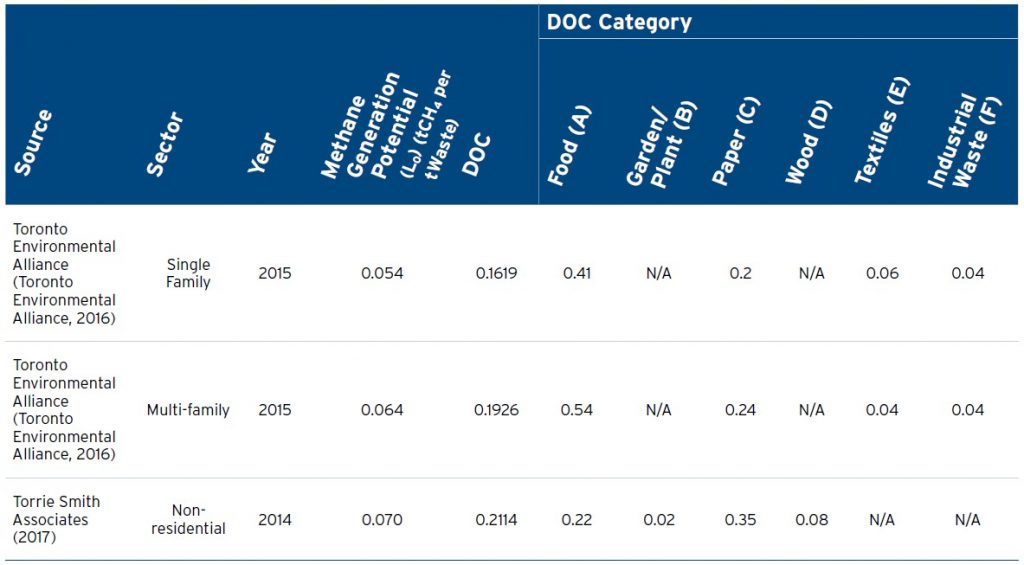
Agricultural emissions are proportioned from national data
We arrived at agricultural emissions by proportioning Ontario’s agricultural emissions in Canada’s National Inventory Report based on Statistics Canada’s Census of Agriculture. Livestock emissions were proportioned based on the head count of cattle and emissions from manure management, and enteric fermentation.
We did not include resource inputs like the manufacturing of fertilizer. Additionally, we did not calculate emissions from land use change or forestry activities due to insufficient data.
Weather normalization reveals the impact of weather on emissions
Natural gas and electricity consumption are very sensitive to weather conditions. In the GTHA, natural gas is commonly used as a fuel for space and water heating in the residential and commercial sectors, therefore there is a direct correlation between the daily temperature and natural gas consumption.
We do not weather normalize the electricity used for cooling in the summer, due to the lack of granularity in the electricity consumption data.
In order to address this variable and make more meaningful comparisons between years, we used a weather normalization method. Weather normalization is achieved by calculating a normalization factor which compares a given year’s total heating degree days (HDD) against a 30-year average.
We used the number of heating degree days, alongside the fraction of natural gas used for heating in each region to normalize the natural gas emissions.
Normalization has a significant effect on the calculated change in natural gas emissions between 2015 and 2017. But even after normalization, the data still shows similar trends in all GTHA regions for the increase or decrease in natural gas emissions between 2015 and 2017. This implies that the current method for normalization doesn’t completely avoid the influence of weather in the comparison — it is very unlikely that all regions would have the same trends in their natural gas consumption if weather was not an influencing factor.
